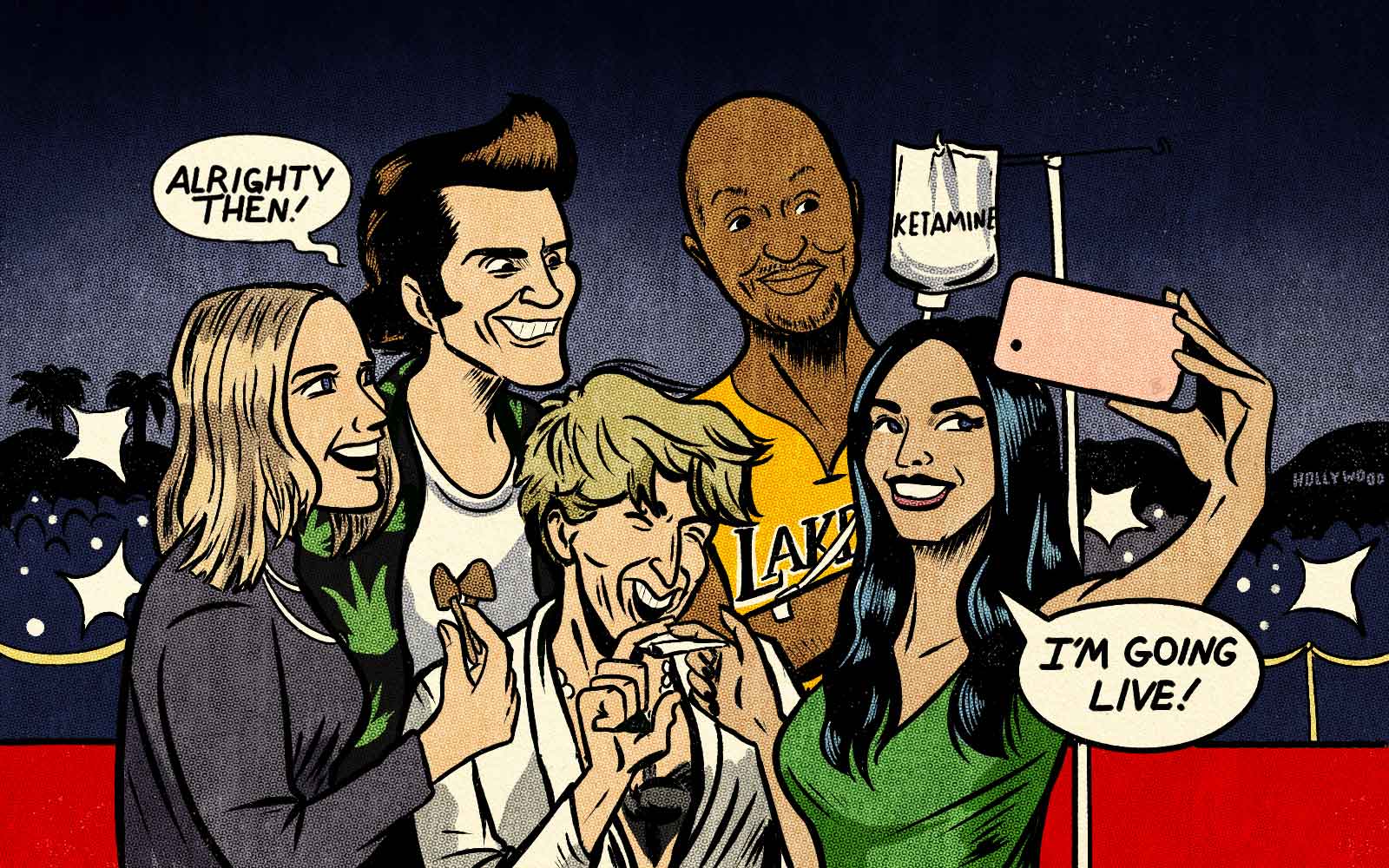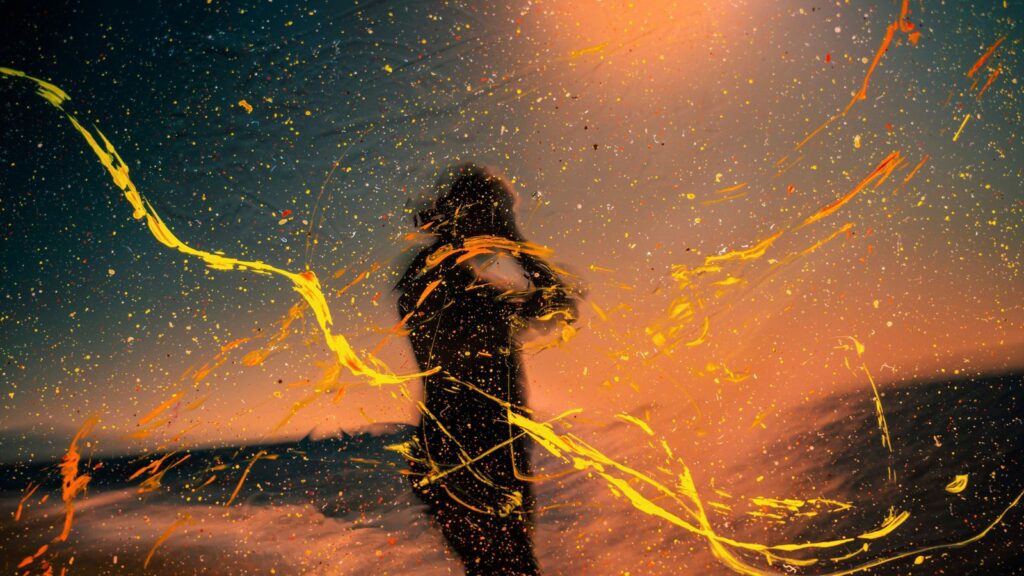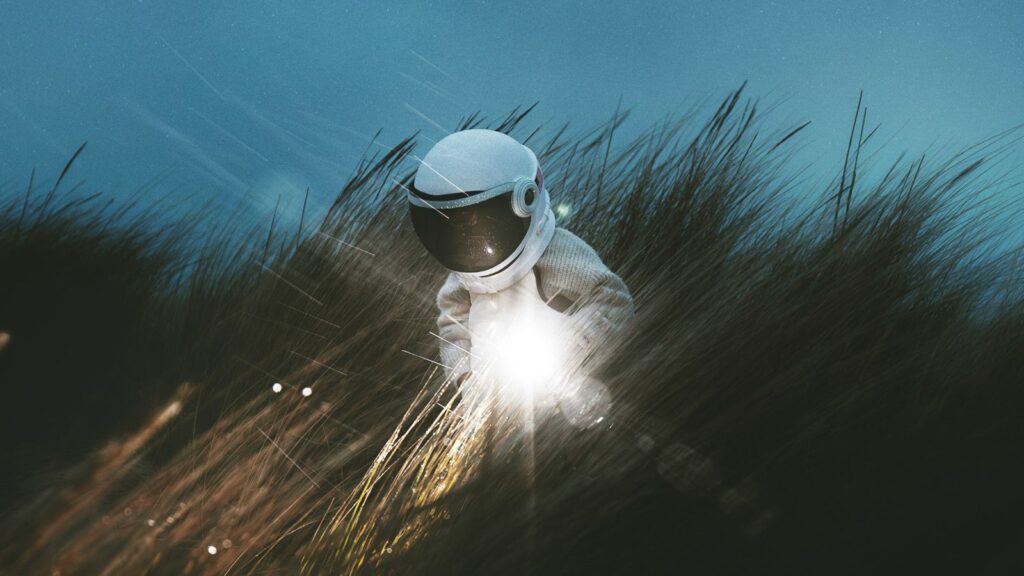With ayahuasca ceremonies popping up all over Los Angeles and Hollywood celebrities heralding the life-changing power of psychedelics on major news stations, Netflix series and morning talk shows — the celebrity influence is a crucial part of the public psychedelic impression. To better understand the current psychedelic landscape, let’s take a look at the experiences between celebrities and psychedelics in the past.
An Evolving Narrative
Celebrity stance on substance use has evolved over time. Throughout history, numerous celebrities endorsed legal mind-altering substances like tobacco and today new celebrities are popping out tequila brands faster than you can say apropiación cultural. Before the wave of illegalization, celebrities were cautiously open about their psychedelic use. Amidst public debate, The Beatles described benefiting from LSD in the ‘60s, though they retroactively described a much deeper relationship with psychedelics and their part in creating the musical legacy. During the ‘60s many musicians and celebrities like Janis Joplin and Jimmi Hendrix were openly using psychedelics, but as the 1970s rang in the War on Drugs the public perceived such substance use as another facet of the dangerous and rowdy lifestyle of the rich and famous.
In 1971, the Nixon administration instigated a global initiative to crack down on drug use worldwide. The Reagan administration only further strengthened the legal and cultural systems stigmatizing drug use. Celebrity spokespeople like LaToya Jackson endorsed Nancy Reagan’s Just Say No campaign — a program that did little in terms of reducing drug use and contributed to the further stigmatization of substance users. The implementation of DARE — Drug Abuse Resistance Education — programs in schools raised generations of kids on anti-substance education.
The Disney Corporation insisted upon certain guidelines for the celebrity faces of their movies and television shows. Teen idols like Brittney Spears and The Jonas Brothers were expected to wear purity rings, and the 2010 image of Miley Cyrus hitting a bong full of salvia, circulated the internet with a fury fueled by the fervor of a society built on puritanical values.
Whether it be Chuck Noris kicking drugs out of America or Jackie Chan’s anti-drug advocacy in Singapore, celebrity presence in anti-drug education is a commonplace tactic. It’s not just Hollywood stars, famous athletes’ spokesmanship is central to the ethos of Foundations for a Drug-Free World, an organization aiming to use these sports role models to inspire kids to abstain from substance use.
In 2021, people are singing a different tune in terms of psychedelic acceptance and celebrities are openly discussing their trippy experiences. Recently, Megan Fox and Jim Carrey have come forward describing the spiritual and life-altering benefits of ayahuasca. Celebrity forrays with ayahuasca are one of the most popular and intriguing narratives. Netflix’s 2020 documentary Have a Good Trip serves as a vehicle for a diverse collection of celebrity trip stories, but even back in 2016, Chelsea Handler released a docuseries exploring and filming her ayahuasca experience in Peru. Times are changing, but what does famous people’s participation in the psychedelic conversation do?
The Power of Celebrity
For better or worse, celebrities hold sway over cultural trends, whether it be hairstyles or participation in social justice movements. Celebrity spokespeople are a fixture of commercial marketing and research shows that the famous can lend credibility and influence consumer decisions regarding brands. This influence exists across age, socio-economic groups and the globe.
Seth Rogan recently came out with designer cannabis and home line, following suit of other celebrities releasing cannabis lines like Willie Nelson and Jay Z. When thinking of how celebrities influence the branding of psychedelics, cannabis serves as a potential model.
The Bob Marley family is in the process of releasing the first celebrity psilocybin mushroom line.
Prominent and recognizable faces promoting these psychoactive substances send the message that such behavior is acceptable and potentially trendy. These messages are then passed along to the huge social networks of celebrities, making their way to the ears of people not usually involved in psychedelic discussions.
The influence of celebrities is not infallible, and consumers are more likely to trust the famous deemed reliable and who are still experiencing career success. In the past the celebrities and musicians openly using psychedelics were deemed wild or out of control, not lending credibility to their behavior. Now with the resurgence of psychedelic research supporting the benefits of exploring these substances, celebrities no longer risk damaging their reputation with a large audience if they are honest about their experiences. In fact, they could even capitalize on the current psychedelic renaissance, boosting popularity and generating a sense of cache around psychedelic use. From a marketing perspective, the weight of celebrity participation in brand creation influences how industries and companies build a reputation.
Medical Advice vs Relational Advice
It might seem ludicrous that an everyday person would take the word of a celebrity over the word of an industry professional, but relational connections are powerful. When people look up to a celebrity, they have a relationship with them and can form emotional bonds even though they don’t actually interact in real life. Though the relationship is one-sided, it can still feel intimate and influence people’s decision-making.
More people are exposed to celebrity content than medical and psychedelic research.
In order to engage with psychedelic research, people need to seek it out or have an eye open for psychedelic content in mainstream media. Famous people are plastered all over mainstream media and it is much more likely someone picks up a People magazine in a dentist’s office than seeks out the newest psychedelic research journal. Though access to psychedelic news is available, people do not need to have as much interest or exert as much effort to passively experience pop culture news. When Megan Fox brings up her ayahuasca experience on Jimmy Kimmel, she normalizes and shares information to viewers who may not normally involve themselves in psychedelic conversations.
Some psychological research presents the importance of celebrities in people’s self-concepts — whether it be the pitcher for their favorite baseball team or the actress behind their favorite film, the perceived relationship to famous people can actually influence people’s identities. Therefore, trusting celebrities and their advice feels congruent with people’s understanding of the world and allows them to maintain the parasocial relationship they have with their favorite stars. This gives people with platforms some sway over their following and fans, and what they choose to endorse has the potential to influence the masses.
Implications
Though celebrity openness about the benefits of psychedelic exploration helps de-stigmatize these powerful substances, it also centers their voices in the conversation.
Take ayahuasca, a plant with generational meaning and sacred significance for indigenous people. Peruvian shamans and the Amazonian communities have rich wisdom and important traditions surrounding ayahuasca. There are mixed feelings about how westerners should engage with the ancestral brew, some feeling that amidst the trends of new-wave spirituality the true significance is bastardized and outsiders are participating in cultural appropriation.
Ayahuasca tourism in Peru, Brazil and Colombia has boomed over the last decade creating a need for a standard of respectful practice for foreigners wanting to engage with this psychoactive tea. High-profile people like Lindsey Lohan or Sting, influence the waves of European and North American tourists seeking their own transformative experiences. This has implications for the co-opting of a cultural tradition and the proliferation of historical trends of colonization.
Celebrities are also speaking out about psychedelic use for specific substance abuse treatment. Lamar Odom recently released a documentary highlighting how he healed the root traumas causing the chaos in his life with intentional psychedelic treatment.
High-profile people live their lives with millions of spectators and the undeniable pressure of the spotlight. The roller coaster of fame activates the dopamine pathways in celebrity brains, mimicking the addictive quality of many substances. This neural activation, combined with access to financial and network resources might contribute to an increased likelihood of celebrity substance abuse.
Studies show ayahuasca and its chemical component DMT as a potential treatment for substance abuse disorders. People managing substance abuse have limited treatment options available, creating a huge demand for new methods of healing. High profile people in recovery can help influence others towards treatment and psychedelics like DMT could provide fresh hope.
Whatever the implications, famous people are a part of the psychedelic discussion and are valuable resources for educating the public and influencing consumer decision-making. The celebrity influence on public perceptions of psychedelics evolves with time, but with the privileges of fame comes responsibilities to their audiences and the cultural contexts they find themselves in.
Do you have any favorite celebrity trip stories? What do you think about celebrity ayahuasca trips?
We would love to hear your thoughts in the comments below.















